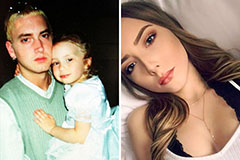The 6-Second Trick For Uv/vis/nir
Table of Contents4 Easy Facts About Uv/vis/nir DescribedThe Greatest Guide To Uv/vis/nirThe smart Trick of Uv/vis/nir That Nobody is DiscussingOur Circular Dichroism IdeasGetting The Uv/vis/nir To WorkUv/vis/nir Can Be Fun For AnyoneTop Guidelines Of Circular DichroismFascination About Uv/vis/nirThe Greatest Guide To Uv/vis/nirGet This Report about Spectrophotometers10 Easy Facts About Circularly Polarized Luminescence ShownSome Known Facts About Spectrophotometers.Circularly Polarized Luminescence - The Facts
It is then scanned through the sample and the reference solutions. Portions of the event wavelengths are transferred through, or reflected from, the sample and the referral. The resultant light strikes the photodetector device, which compares the relative intensity of the 2 beams. Electronic circuits transform the relative currents into direct transmission portions and/or absorbance/concentration values.The transmission of a recommendation compound is set as a baseline (datum) value, so the transmission of all other substances are tape-recorded relative to the preliminary "zeroed" substance. The spectrophotometer then transforms the transmission ratio into 'absorbency', the concentration of particular components of the test sample relative to the preliminary compound.
Because samples in these applications are not easily available in big quantities, they are especially matched to being examined in this non-destructive strategy. In addition, precious sample can be conserved by utilizing a micro-volume platform where as little as 1u, L of sample is needed for complete analyses. A brief description of the treatment of spectrophotometry consists of comparing the absorbency of a blank sample that does not include a colored substance to a sample that includes a colored compound.
Not known Facts About Circularly Polarized Luminescence
In biochemical experiments, a chemical and/or physical home is chosen and the procedure that is utilized is specific to that home in order to derive more information about the sample, such as the amount, pureness, enzyme activity, etc. Spectrophotometry can be used for a number of strategies such as figuring out optimum wavelength absorbance of samples, figuring out optimal p, H for absorbance of samples, determining concentrations of unidentified samples, and determining the p, Ka of numerous samples.: 21119 Spectrophotometry is likewise a valuable process for protein purification and can likewise be used as a technique to create optical assays of a compound.
It is possible to know the concentrations of a 2 part mix utilizing the absorption spectra of the basic solutions of each component. To do this, it is needed to know the extinction coefficient of this mixture at 2 wave lengths and the termination coefficients of options that contain the recognized weights of the 2 elements.

All about Circular Dichroism
Region. The concentration of a protein can be estimated by measuring the OD at 280 nm due to the presence of tryptophan, tyrosine and phenylalanine.
Nucleic acid contamination can also interfere. This approach requires a spectrophotometer capable of determining in the UV region with quartz cuvettes.: 135 Ultraviolet-visible (UV-vis) spectroscopy involves energy levels that excite electronic shifts. Absorption of UV-vis light thrills molecules that remain in ground-states to their excited-states. Visible area 400700 nm spectrophotometry is used thoroughly in colorimetry science.
These curves can be used to check a new batch of colorant to inspect if it makes a match to specifications, e
Traditional visible region spectrophotometers can not detect if a colorant or the base material has product. This can make it challenging to handle color issues if for example one or more of the printing inks is fluorescent. There are two significant setups for visual spectrum spectrophotometers, d/8 (round) and 0/45.
Researchers utilize this instrument to measure the amount of compounds in a sample. If the substance is more concentrated more light will be soaked up by the sample; within little varieties, the Beer, Lambert law holds and the absorbance in between samples vary with concentration linearly. When it comes to printing measurements 2 alternative settings are frequently utilized- without/with uv filter to control much better the impact of uv brighteners within the paper stock.
Unknown Facts About Circularly Polarized Luminescence
Some applications require little volume measurements which can be performed with micro-volume platforms. As explained in the applications area, spectrophotometry can be used in both qualitative and quantitative analysis of DNA, RNA, and proteins. Qualitative analysis can be used and spectrophotometers are used to tape spectra of substances by scanning broad wavelength areas to identify the absorbance properties (the strength of the color) of the substance at each wavelength.

Uv/vis Can Be Fun For Everyone
One significant aspect is the type of visit site photosensors that are readily available for various spectral areas, but infrared measurement is also tough since practically whatever gives off IR as thermal radiation, especially at wavelengths beyond about 5 m. Another problem is that several products such as glass and plastic take in infrared, making it incompatible as an optical medium.
2013. p. 13. Allen, DW; Cooksey, C; Tsai, BK (Nov 13, 2009). "Spectrophotometry". Obtained Dec 23, 2018. Ninfa AJ, Ballou DP, Benore M (2010 ). Basic Laboratory Approaches for Biochemistry and Biotechnology (2nd ed.). Hoboken: Wiley & Sons. ISBN 9780470087664. OCLC 488246403. Schwedt G (1997 ). The important guide to analytical chemistry.
Oke, J. B.; Gunn, J. E.
Top Guidelines Of Circular Dichroism

Ninfa AJ, Ballou DP, Benore M (2015 ). Fundamental Lab Techniques for Biochemistry and Biotechnology (3, rev. ed.). UV/Vis/NIR. Laboratory Equipment.
Getting My Circularly Polarized Luminescence To Work
Obtained Jul 4, 2018. Trumbo, Toni A.; Schultz, Emeric; Borland, Michael G.; Pugh, Michael Eugene (April 27, 2013). "Applied Spectrophotometry: Analysis of a Biochemical Mix". Biochemistry and Molecular Biology Education. 41 (4 ): 24250. doi:10. 1002/bmb. 20694. PMID 23625877. (PDF). www. mt.com. Mettler-Toledo AG, Analytical. 2016. Obtained Dec 23, 2018. Cortez, C.; Szepaniuk, A.; Gomes da Silva, L.
"Checking Out Proteins Purification Strategies Animations as Tools for the Biochemistry Teaching". Journal of Biochemistry Education. 8 (2 ): 12. doi:. Garrett RH, Grisham CM (2013 ). Biochemistry. Belmont, CA: Cengage. p. 106. ISBN 978-1133106296. OCLC 801650341. Holiday, Ensor Roslyn (May 27, 1936). "Spectrophotometry of proteins". Biochemical Journal. 30 (10 ): 17951803. doi:10. 1042/bj0301795.
PMID 16746224. Hermannsson, Ptur G.; Vannahme, Christoph; Smith, Cameron L. C.; Srensen, Kristian T.; Kristensen, Anders (2015 ). "Refractive index dispersion sensing utilizing a selection of photonic crystal resonant reflectors". Applied Physics Letters. 107 (6 ): 061101. Bibcode:2015 Ap, Ph, L. 107f1101H. doi:10. 1063/1. 4928548. S2CID 62897708. Mavrodineanu R, Schultz JI, Menis O, eds.
5 Easy Facts About Spectrophotometers Shown
U.S. Department of Commerce National Bureau of Standards unique publication; 378. Washington, D.C.: U.S. National Bureau of Standards. p. 2. OCLC 920079.
The procedure starts with a regulated source of light that illuminates the evaluated sample. When it comes to reflection, as this light connects with the sample, some is soaked up or released. The released light travels to the detector, which is evaluated, measured, and presented as industry-standard color scales and indices.
All terms are evaluated over the noticeable spectrum from 400 to 700 nm. In the case of transmission, when the light connects with the sample, it is either taken in, reflected, or sent.
The 20-Second Trick For Uv/vis/nir
Examples include APHA (American Public Health Association) for watercolor and pureness analysis, ASTM D1500 for petrochemical color analysis, edible oil indices used in food, and color analyses of beverages. The streamlined mathematics looks like this:. Where T is the transmission coefficient. All terms are evaluated over the noticeable spectrum from 400 to 700 nm.
Image Credit: Matej Kastelic/ Dr. Arnold J. Beckman and his coworkers at the National Technologies Laboratories first invented the spectrophotometer in 1940. In 1935 Beckman established the company, and the discovery of the spectrophotometer was their most ground-breaking development.
All About Circular Dichroism
Over time, researchers kept enhancing the spectrophotometer style to improve its performance. The UV abilities of the design B spectrophotometer were improved by changing the glass prism with a quartz prism.
After 1984, double-beam variations of the device were designed. The addition of external software application with the arrangement of onscreen display screens of the spectra can be found in the 1990s. Normally, a spectrophotometer is made up of 2 instruments, specifically, a spectrometer and a photometer. A standard spectrophotometer consists of a light, a monochromator, a collimator for straight light beam transmission, a cuvette to position a sample, and a photoelectric detector.
9 Simple Techniques For Circular Dichroism
There are various types of spectrophotometers in various shapes and sizes, each with its own function or functionality. A spectrophotometer identifies just how much light is reflected by chemical elements. circular dichroism. It determines the distinction in light intensity based on the overall quantity of light introduced to a sample and the amount of beam that passes through the sample service
A spectrophotometer is utilized to figure out the concentration of both colorless and colored solutes in a solution. This instrument is used to determine the rate of a response.
 Marla Sokoloff Then & Now!
Marla Sokoloff Then & Now! Hailie Jade Scott Mathers Then & Now!
Hailie Jade Scott Mathers Then & Now! Kelly Le Brock Then & Now!
Kelly Le Brock Then & Now! Dawn Wells Then & Now!
Dawn Wells Then & Now! The Olsen Twins Then & Now!
The Olsen Twins Then & Now!